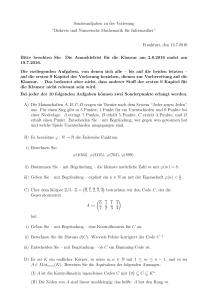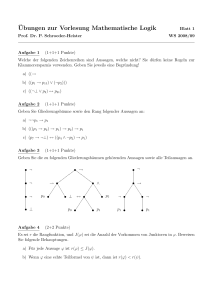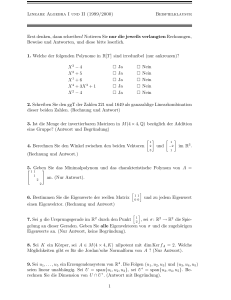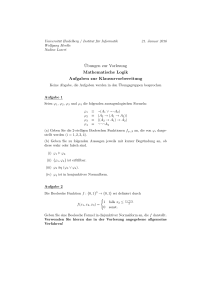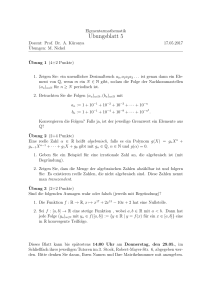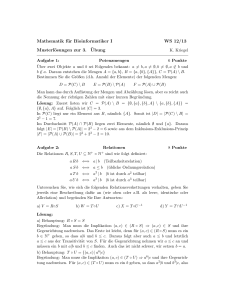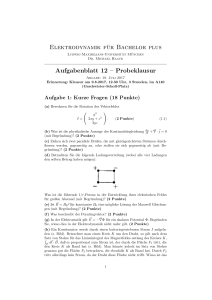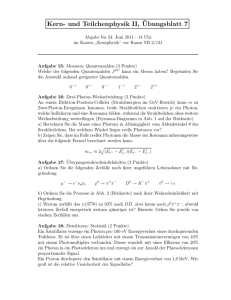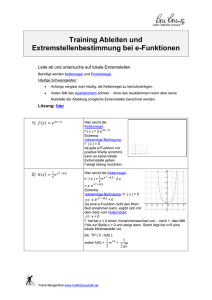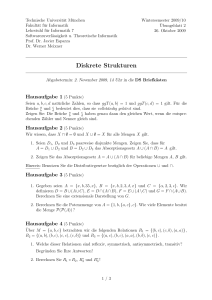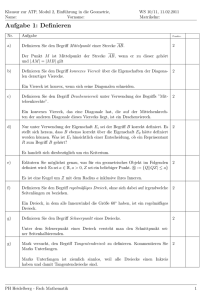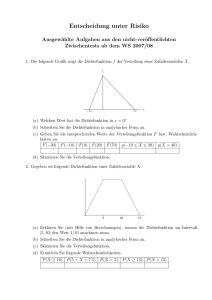x - NiBiS
Werbung
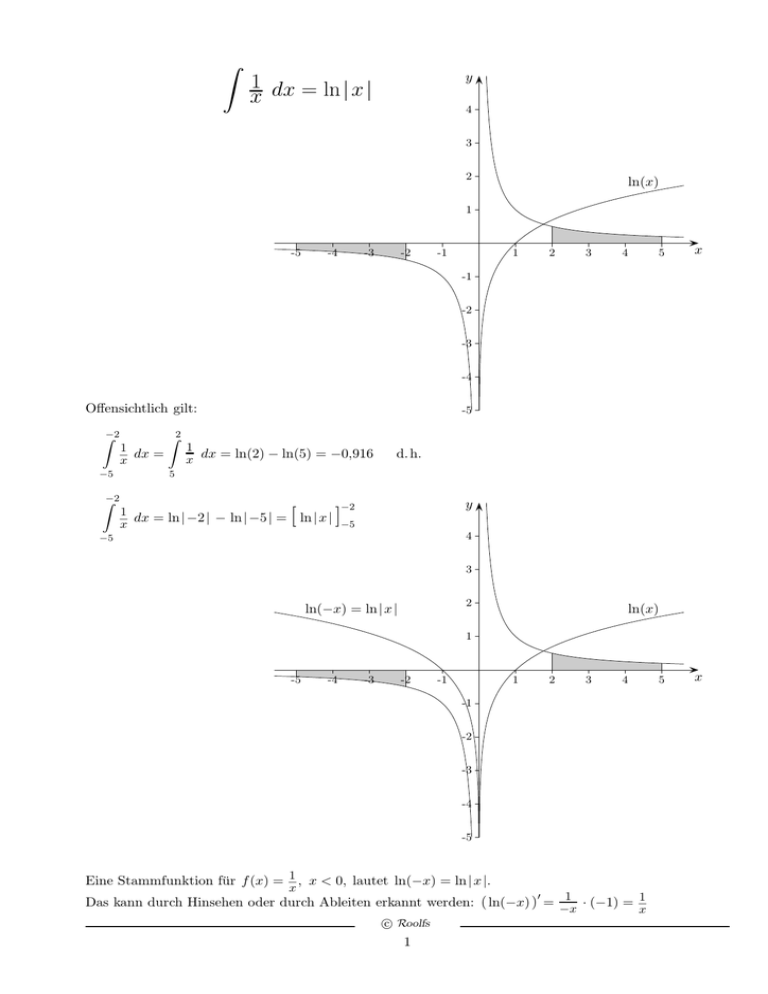
Z y 1 x dx = ln | x | 4 3 2 ln(x) 1 -5 -4 -3 -2 -1 1 2 3 4 5 x -1 -2 -3 -4 Offensichtlich gilt: Z−2 Z2 −5 5 1 − dx = x Z−2 -5 1 x dx = ln(2) − ln(5) = −0,916 1 − dx = ln | −2 | − ln | −5 | = x d. h. y −2 [ ln | x | ]−5 4 −5 3 2 ln(−x) = ln | x | ln(x) 1 -5 -4 -3 -2 -1 1 2 3 4 -1 -2 -3 -4 -5 1 , x < 0, lautet ln(−x) = ln | x |. Eine Stammfunktion für f (x) = − x 1 1 Das kann durch Hinsehen oder durch Ableiten erkannt werden: ( ln(−x) ) = −x · (−1) = − x ′ c Roolfs 1 5 x Zur Erinnerung: 1 (ln x)′ = − x (x > 0) Begründung: e ln x = x | ( )′ (Kettenregel) e ln x (ln x)′ = 1 1 (ln x)′ = − x y 4 3 2 ln(−x) = ln | x | ln(x) 1 -5 -4 -3 -2 -1 1 2 3 4 5 -1 -2 -3 -4 -5 Man beachte die Symmetrie. Aus der y-Achsensymmetrie F (x) = F (−x) folgt für die Ableitung die Punktsymmetrie F ′ (x) = −F ′ (−x) (Kettenregel). c Roolfs 2 x
